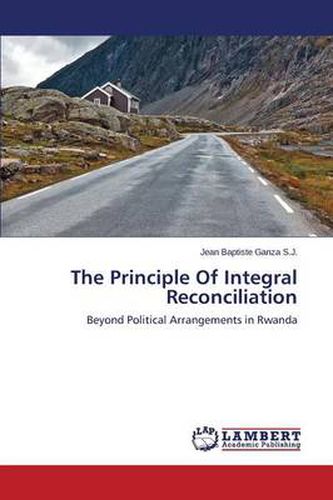Readings Newsletter
Become a Readings Member to make your shopping experience even easier.
Sign in or sign up for free!
You’re not far away from qualifying for FREE standard shipping within Australia
You’ve qualified for FREE standard shipping within Australia
The cart is loading…






This title is printed to order. This book may have been self-published. If so, we cannot guarantee the quality of the content. In the main most books will have gone through the editing process however some may not. We therefore suggest that you be aware of this before ordering this book. If in doubt check either the author or publisher’s details as we are unable to accept any returns unless they are faulty. Please contact us if you have any questions.
The Rwandan government has initiated a process of reconciliation for its citizens who remain deeply divided by the 1994 Tutsi genocide. The judicial system it installed in 2002, the Gacaca courts, had a double target: justice for the victims and reconciliation of the offended and the offender. As imperfect as it should be, the Gacaca judicial system deserves some credit. More details about the killings became public, especially the location of mass graves. The Tutsi were then able to find the remains of their loved ones and rebury them with the dignity reserved to humans. The Hutu who participated in the genocide were reintroduced to their victims, thus being given back the humanity their crimes had significantly eroded. Many of the offenders got the chance to look into their victims’ eyes and apologize. They appeared as vulnerable as their victims. The creation of the Gacaca courts responded to the need of political arrangements for public safety and order. This book explores the steps missing for the reconciliation process to be complete. Economic justice, cultural conversion, ecological rehabilitation, and spirituality must be part of the reconciliation package in Rwanda.
$9.00 standard shipping within Australia
FREE standard shipping within Australia for orders over $100.00
Express & International shipping calculated at checkout
This title is printed to order. This book may have been self-published. If so, we cannot guarantee the quality of the content. In the main most books will have gone through the editing process however some may not. We therefore suggest that you be aware of this before ordering this book. If in doubt check either the author or publisher’s details as we are unable to accept any returns unless they are faulty. Please contact us if you have any questions.
The Rwandan government has initiated a process of reconciliation for its citizens who remain deeply divided by the 1994 Tutsi genocide. The judicial system it installed in 2002, the Gacaca courts, had a double target: justice for the victims and reconciliation of the offended and the offender. As imperfect as it should be, the Gacaca judicial system deserves some credit. More details about the killings became public, especially the location of mass graves. The Tutsi were then able to find the remains of their loved ones and rebury them with the dignity reserved to humans. The Hutu who participated in the genocide were reintroduced to their victims, thus being given back the humanity their crimes had significantly eroded. Many of the offenders got the chance to look into their victims’ eyes and apologize. They appeared as vulnerable as their victims. The creation of the Gacaca courts responded to the need of political arrangements for public safety and order. This book explores the steps missing for the reconciliation process to be complete. Economic justice, cultural conversion, ecological rehabilitation, and spirituality must be part of the reconciliation package in Rwanda.